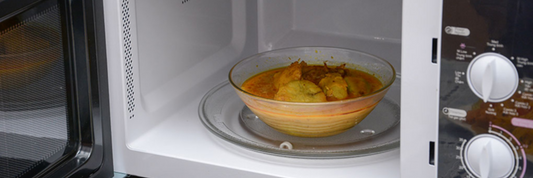The restaurant industry is fiercely competitive. Every aspect, from marketing campaigns to customer service, revolves around one key goal: driving sales. But how do you achieve that in today's market? This article explores the factors influencing restaurant sales, provides an overview of the current situation, and offers practical ways to increase revenue.
Current State of Restaurant Sales in Canada
According to a recent report by Restaurants Canada on the restaurant industry in the first half of 2024:
-
Profit Pinch: A staggering 62% of restaurants are operating at a loss or barely breaking even, representing a 9% increase compared to July 2023 (53%). This figure is significantly higher than the pre-pandemic level of 10%.
-
Closure Surge: Restaurant bankruptcies jumped 44% in 2023, marking the highest annual figure in a decade.
These alarming statistics highlight the immense pressure on the industry. The market has become more challenging and susceptible to various factors, necessitating adaptation and innovative strategies to remain profitable.

Factors Impacting Restaurant Sales
Several key factors influence restaurant revenue. Here are four important aspects that restaurant owners should consider:
1. Season and Region
Holidays and special occasions like Valentine's Day and Mother's Day often drive significant revenue for restaurants. Additionally, regional differences in consumer behavior can impact sales. Restaurants in tourist-heavy locations may see seasonal fluctuations in revenue, while urban and suburban areas may experience different customer trends.
2. Quality of Service
Excellent service is crucial for customer retention and attracting new patrons. High-end restaurants, in particular, must provide exceptional service to justify premium pricing. Well-trained, friendly, and knowledgeable staff can significantly enhance the dining experience, leading to repeat business and positive word-of-mouth marketing.
3. Pricing and Menu Strategy
Prices and menu offerings should align with the target customer base and cater to their preferences. Regular menu evaluations help ensure that dishes are both profitable and appealing. Offering competitive pricing and value-based promotions can attract a steady stream of customers and ensure consistent revenue.
4. Branding and Customer Experience
A strong brand identity influences customer perception and purchasing decisions. Restaurants that invest in branding through social media, online engagement, and customer care tend to build stronger relationships with their audience, enhancing their reputation and driving sales.

Practical Strategies to Increase Restaurant Sales
To thrive in this evolving industry, restaurants must adopt innovative strategies. Below are ten practical ways to optimize operations, improve service quality, and strengthen branding.
1. Optimize Your Menu
-
Menu Performance Analysis: Conduct regular reviews to assess profitability and customer appeal.
-
Compelling Descriptions & Strategic Pricing: Use vivid language and implement smart pricing techniques to enhance perceived value.
-
Data-Driven Design & Seasonal Highlights: Utilize A/B testing for menu layout and showcase seasonal specialties to keep offerings dynamic.
2. Offer Takeout and Delivery
-
Expand your reach by offering takeout and delivery options.
-
Partner with established delivery platforms or create a user-friendly online ordering system.
-
Consider using eco-friendly packaging options to appeal to environmentally conscious customers.
3. Enhance Your Online Presence
-
Utilize high-quality photos and videos on social media to showcase your dishes.
-
Foster online engagement through interactive promotions, contests, and customer interactions.
-
Maintain a strong digital footprint to attract new customers and retain existing ones.
4. Embrace Online Ordering Systems
-
Partner with online ordering platforms to expand your customer base.
-
Focus on food quality and service while letting platforms handle marketing and delivery logistics.
5. Run Promotions and Discounts
-
Offer happy hour deals, lunch specials, or loyalty programs to attract and retain customers.
-
Use strategic promotions to boost sales during slow periods.
6. Focus on Customer Service
-
Train staff to be attentive, friendly, and knowledgeable about menu offerings.
-
Empower employees to handle customer requests promptly and create unforgettable dining experiences.
7. Upsell and Cross-Sell Effectively
-
Recommend menu upgrades that pair well with chosen dishes.
-
Suggest appetizers or drinks that complement main courses to enhance the dining experience.
8. Host Events and Themed Nights
-
Organize live music nights, cooking classes, or seasonal menus to attract customers.
-
Introduce themed nights like "Taco Tuesdays" to encourage customer engagement.
9. Invest in Staff Training
-
Provide training on food preparation, safety protocols, customer service, and conflict resolution.
-
Well-trained staff enhances customer experience and reduces employee turnover.
10. Track Results and Adapt
-
Monitor sales data and customer feedback to identify areas for improvement.
-
Analyze successful promotions and customer preferences to optimize operations and maximize profitability.
Conclusion
Success in the restaurant industry requires a combination of strategic planning and adaptability. A well-optimized menu, convenient takeout options, and a strong online presence attract customers, while excellent service and promotions keep them coming back. Investing in staff training ensures consistent quality, and data-driven decision-making helps restaurants refine strategies for long-term success.
By implementing these strategies, restaurants can navigate the challenges of the industry, increase sales, and build a sustainable business in today's competitive market.










